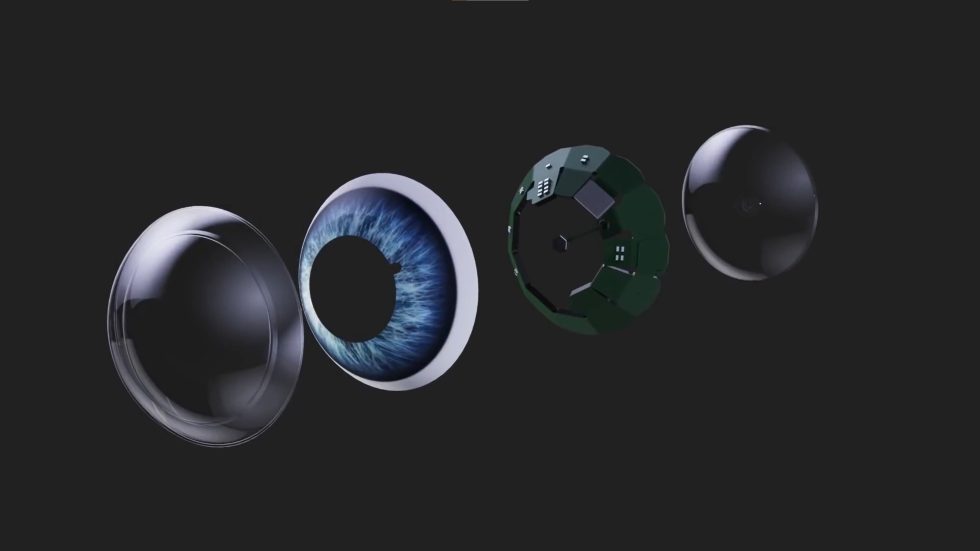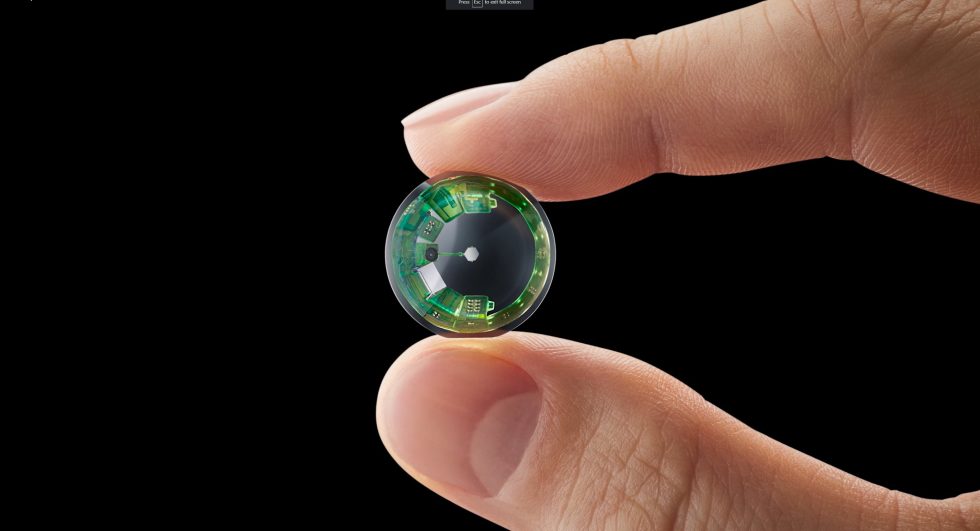
Since 2015, a California-based company called Mojo Vision has been developing smart contact lenses. Like smart glasses, the idea is to put helpful AR graphics in front of your eyes to help accomplish daily tasks. Now, a functioning prototype brings us closer to seeing a final product.
In a blog post this week, Drew Perkins, the CEO of Mojo Vision, said he was the first to have an "on-eye demonstration of a feature-complete augmented reality smart contact lens." In an interview with CNET, he said he's been wearing only one contact at a time for hour-long durations. Eventually, Mojo Vision would like users to be able to wear two Mojo Lens simultaneously and create 3D visual overlays, the publication said.
According to his blog, the CEO could see a compass through the contact and an on-screen teleprompter with a quote written on it. He also recalled viewing a green, monochromatic image of Albert Einstein to CNET.

At the heart of the lens is an Arm M0 processor and a Micro LED display with 14,000 pixels per inch. It's just 0.02 inches (0.5 mm) in diameter with a 1.8-micron pixel pitch. Perkins claimed it's the "smallest and densest display ever created for dynamic content."
Developing the contact overall included a focus on physics and electronics miniaturization, Perkins wrote. Mojo Lens developed its power management system with "medical-grade micro-batteries" and a proprietary power management integrated circuit.
The Mojo Lens also uses a custom-configured magnetometer (CNET noted this drives the compass Perkins saw), accelerometer, and gyroscope for tracking. The goal is that AR remains visible even as you move your eyes around, Perkins wrote. Eye movement is essential as there's no gesture control, like some smart glasses, such as Ray-Ban Stories, have. There is voice control, a Mojo Vision rep told Ars Technica, but the user interface's primary method of control is eye-tracking.
One of the biggest obstacles facing smart glasses is how cumbersome and odd they can look. Some devices, like Stories and Nreal Air, use a sunglass-like appearance to combat this.
A contact lens sounds like it has the potential to be even more discreet than AR headgear posing as regular Ray-Bans. But the current prototype uses a "relay accessory," as Mojo Vision's rep put it, worn around the neck. It includes a processor, GPU, and 5 GHz radio for sending and receiving data to and from the lens. According to CNET, the accessory also sends information "back to computers that track the eye movement data for research." Perkins' blog said this tech required custom ASIC designs.

In its current state, that sounds like a big drawback for consumers. Being forced to wear anything around your neck can be burdensome, even if it's small. And it's unclear how warm the device gets.
The current prototype also uses a hat with an integrated antenna for easier connecting, CNET reported; though, we'd expect this to be omitted from a final product.
There's no firm release date for the Mojo Lens, which could be the first AR contact lens to reach consumers. Near-term goals include getting potential partners, investors, and journalists to try the smart lens.

"With this advancement, we now have a testing platform that helps us refine and build Mojo Lens that will ultimately lead to submission to the FDA for market approval," Perkins wrote. "To accomplish this, we will conduct several clinical studies to test capabilities and provide feedback on software and apps."
Perkins' blog suggested that people could be walking around with smart contacts within 10 years. He painted a world where athletes wear smart contacts for focused, heightened training. He also described using smart contacts to display helpful information, like when an Uber is coming to pick you up from the airport or physical and mental health information.
Editor's note: This article was updated to correct the location of the lens' M0 processor and inclusion of voice control.
reader comments
190